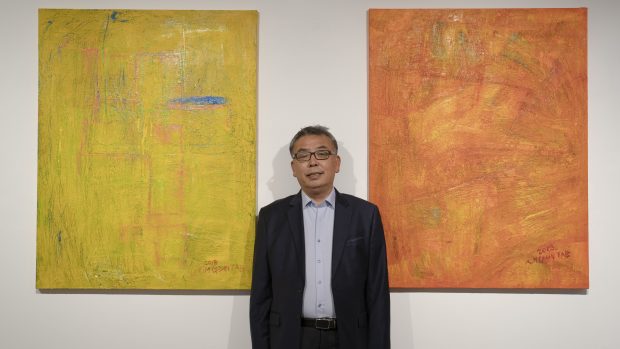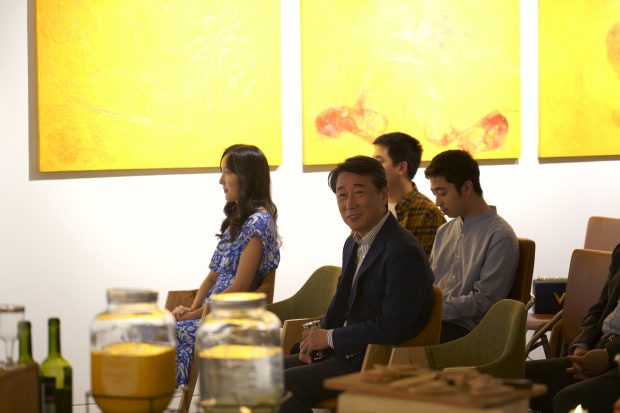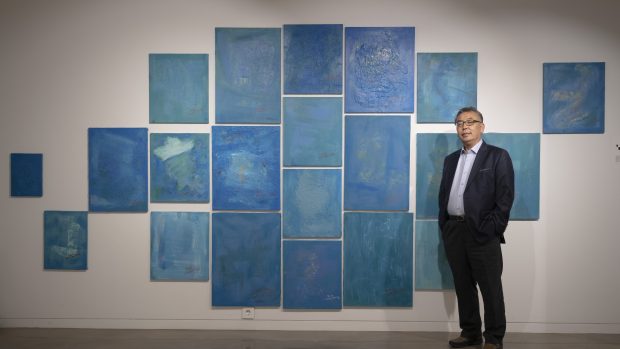“Into The Light”: a Route From Art to Social Issues
This is a story of art, disabilities, diplomacy, and democracy. A story in which the feeling of guilt is intertwined with the spiritual searching of a soul. An adventure that started in Gwangju, South Korea reached New York in the United States. And this was possible thanks to a partnership between Kim Geun Tae and Oh Joon. But let’s start from the beginning.
Kim Guen Tae is a Korean artist known for his artworks that feature children with disabilities. Having himself disabilities (he has impairments with one of his ears and one of his eyes), he understands very well the importance of speaking about this issue. However, his story is much more than this. In fact, when he was young, Kim Guen Tae studied art in Gwangju. In the early 1980s, there was an uprising in the process of democratization in Korea. And young Kim Guen Tae, as part of the student militia that occupied the Jeonnam Province Building, took part in the freedom fighting as a militia committee member. The national army surrounded the Province Building to launch a crack-down on the militia. Kim Guen Tae was tipped by a relative of his in the army and escaped the place. He saved his life but many other students who remained there were killed or injured. It took him a long time to get out of that feeling of guilt. He went through difficult times and traveled to many places including some foreign countries, in search of his soul. Years later, while he was teaching art in Mokpo, South Korea, he happend to visit some facilities to protect children with mental disabilities. When he saw their faces he realized thathe finbally found his own face, his own soul. “They are the true faces of human beings”, he thought. After a long soul-searching, he had finally found his anwer. That experience helped him in healing his yearlong sense of guilt. From that moment on, Kim Guen Tae started painting only the faces of those children. During his first exhibition related to that cause, people suggested him to exhibit the paintings also abroad, for example in the United Nations. Here is where the story of Kim Geun Tae and Oh Joon encountered. In fact, at that time, Oh Joon was the Korean Ambassador at the UN and the President of CRPD (the Convention on the Rights of Persons with Disabilities). After seeing the photos of Kim’s artworks, he, himself an amateur artists, decided to host an exhibition on December 3, 2015, the International Day of Persons with Disabilities, at the United Nations, New York. Since the exhibition was very successful, Kim’s artworkds continued to be shown in other international venues such as Berlin, Geneva and Paris. Even though the paintings were getting known internationally, Oh Joon suggested to Kim Guen Tae to hold another exhibition in Korea, because many Koreans did not have chances to see the artworks. That is how the project ‘Into the Light’ came into being. Hosted in the art gallery of Insadong, Seoul, the exhibition showed the artworks of Kim Guen Tae, Joon Oh, and three young artists.
 Interview with Kim Guen Tae (artist)
Interview with Kim Guen Tae (artist)
-What is the concept of your exhibition?
Into the light showed the collection of my artworks and the way in which they changed since the UN exhibition in 2015. This evolution is also related to the fact that my eye condition is getting worse so I cannot see clearly as I was able to do three years ago. The project also featured the artworks of Ambassador Oh and other three young artists who are mentally disabled. I created this title because, as a Christian, I wanted to deliver a message about the rebirth of children with mental disabilities. In this sense, I think they had to pass through to the light.
-How did you fall in love with art?
When I was attending middle school, I was not really interested in art but in my art teacher; she was a beautiful young woman. This may be one of the reasons why I started painting. Then I joined an art club and decided to study art in college. I usually paint people with disabilities but, in my opinion, the subject or object of artwork is not that important. The most important thing is the prospective that the artist uses to show things. I used to paint in a realistic way but now I try to paint in a four-dimensional level. This dimension brings together all the things we cannot see. While I do meditation, I noticed there are things we cannot see normally. Well, I feel that people with mental disabilities sometimes see or get those things. That is why I try to show those things as well.
-I noticed you use mostly primary colors.
Yes, I use mostly primary colors because I think they are useful to describe the inner emotion of these children. I feel I can touch their soul with those colors. The three young artists who were part of the exhibition are my students. I felt that they have a very unique talent so I decided to also exhibit their artworks in order to raise awareness about this issue.
-How can art help people with disabilities?
Among people with disabilities, children with mental disabilities usually do not have any chance to achieve a position in the society; so by depicting these cases of disabilities and showing that they have their feelings and thoughts, I hope I can contribute to change the perception of people, breaking the prejudice. I think that all of us are too used to prejudices; they are part of our life. I do not think I will be able to eliminate them totally but I am trying to show that people with mental disabilities have emotions, ideas, and all of these things are in line with the human nature. I may not be able to eliminate human prejudices but I may be able to reduce them.
-Do you think that young Korean people are more open-minded than the old one about this topic?
This is a very hard question (laughing). I think that, in general, young generations are more open-minded than the old ones. For example, they seem to be trying to understand why some people have disabilities or how they can help. So I think the future might be better.
-Since you had exhibitions both in Korea and abroad, did you noticed different reactions in the audiences?
Because of the Confucian education in Korea, Korean people are not direct into expressing themselves and they do not ask many questions. Instead, in foreign countries like the European ones or US, people have a different education and are open-minded. Consequently, they asked me many questions and related their feelings more directly.
-What do you think it should be done in Korea in order to raise awareness about this topic?
Both the government and the society should do more to promote rights for people with disabilities and to provide accessibility to them. For example, the facilities for housing and supporting people with disabilities are mostly outside the cities because they cannot afford the cost of renting. The government should also try to change people perception about this topic.
-Which are your future plans?
I would like to start new art-related projects in Africa, especially in Kenya and Benin. I am very interested in those areas because when I meet African people I can see the pure human nature.
Interview with Joon Oh (Ambassador) 
-Do you think that there are discriminations against people with disabilities in Korea?
Yes, there are. I think that some discriminations are structural. For example, during the TV broadcasting, there are sometimes sign languages interpreters or subtitles on the screen but, most of the time, there aren’t. By not providing the service, they are discriminating against a part of the population. This is not an intentional discrimination but it is still a discrimination, which I call structural.
Then, there are some other discriminations that are related to the lack of awareness. The NIMBY (Not In My Back Yard) concept may also be applied to this situation. Recently, somewhere in the suburbs of Seoul, the government was trying to build a school for children with disabilities and townspeople opposed it, argunign that the school would have damaged the image of the town. This is an attitudinal discrimination because people do not have enough social awareness.
That is why I think people with disabilities and their supporters should stand to ask the government to provide them equal accessibility. This should not be an act of charity, it is their right to have access to everything in our soicety. For example, in installing restrooms, there should be restrooms both for men and women, right? If the owner of the building says “well, in this building most of our customers are men so we don’t need women’s toilets”, it does not make sense. For the same reason, restrooms of disabled people should be built to give equal access to places like everyone else.
Moreover, if I compare Korea to European and North American countries, I feel Korea still have a long way to go. Maybe, among Asian countries, Korea is quite advanced in terms of providing welfare to people with disabilities. The problem is that, so far, Korea has been focusing too much on protection and welfare. It means that the government usually provides assistance directly to the person with disabilities but it does not take a social approach enough, by raising awareness or promoting accessibility. For example, they spend money in upgrading wheelchairs even though the wheelchair accessibility is still not good. Thus, I think it is time for Korea to change and have more of a social and rights-based approach.
-Do you think the current government is taking care of this situation?
We now have a liberal government in Korea. Usually a liberal government gives more priority to advancing social issues. In that context, I think that the current Korean government is making good efforts to make progress. But, as I said earlier, there should be more attention to taking a social approach in addressing issues realted to the rights of persons with disabilitites.
By Alessandra Bonanomi, reporter for The AsiaN
























































